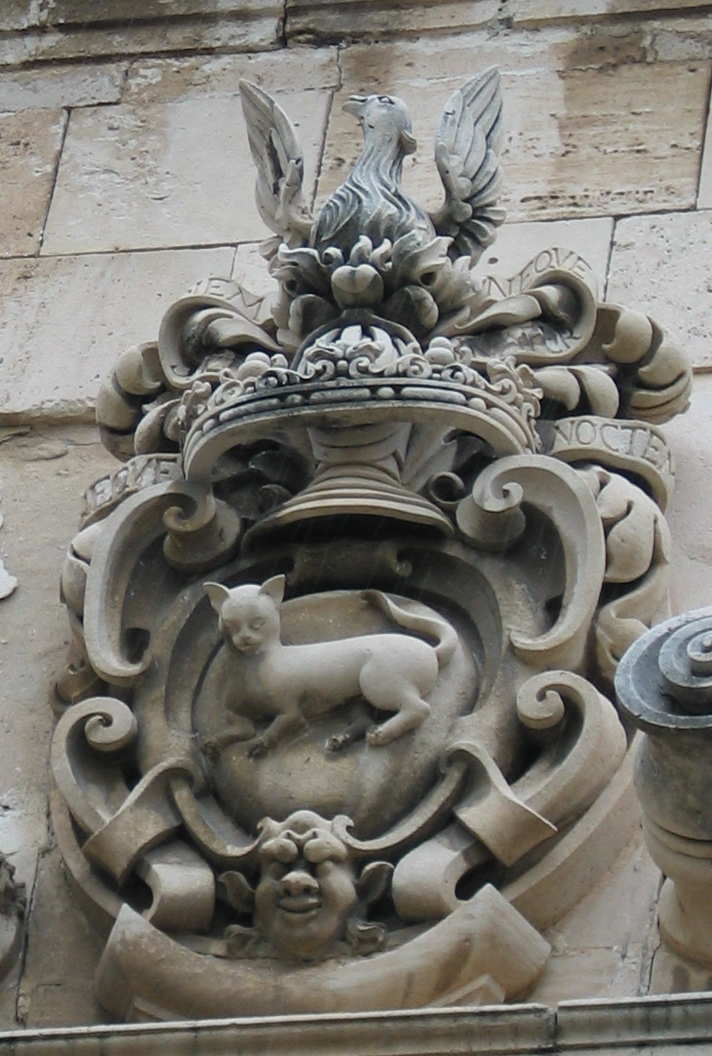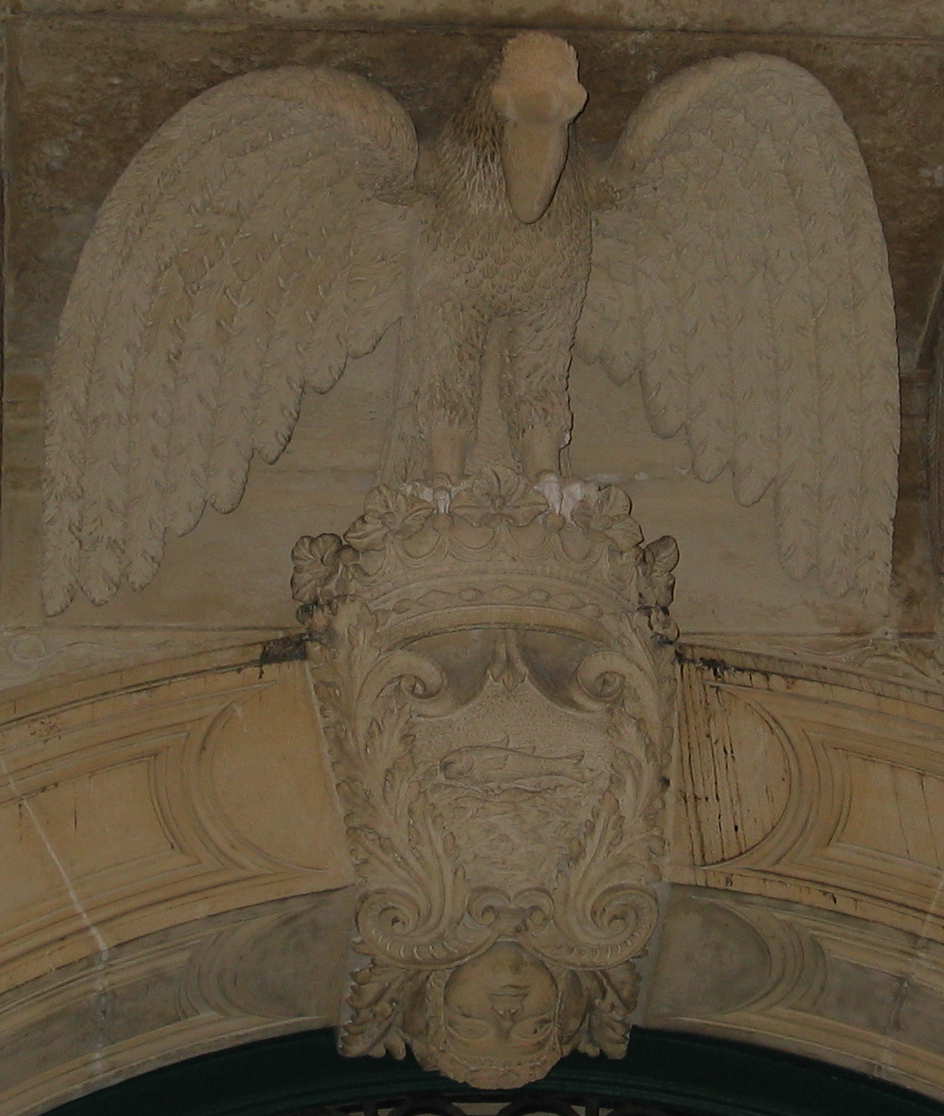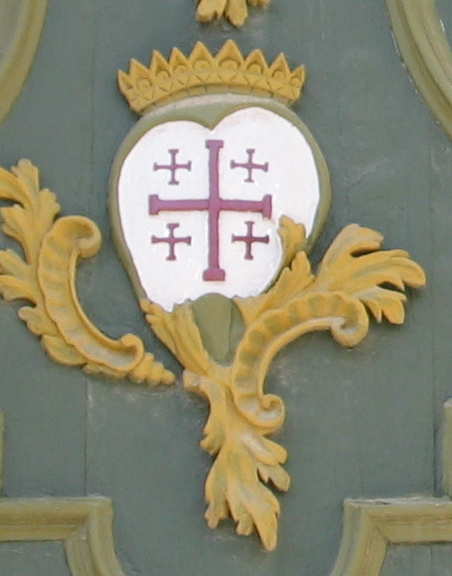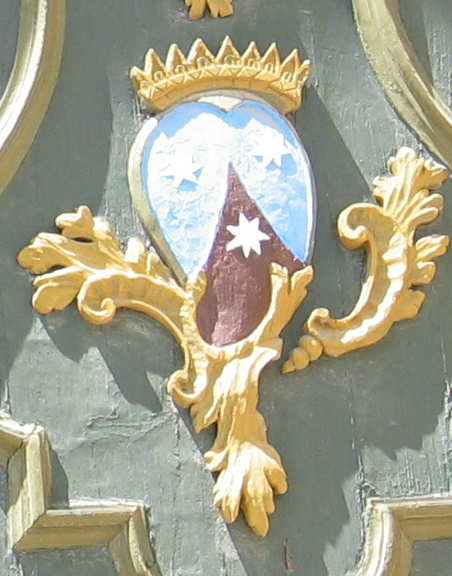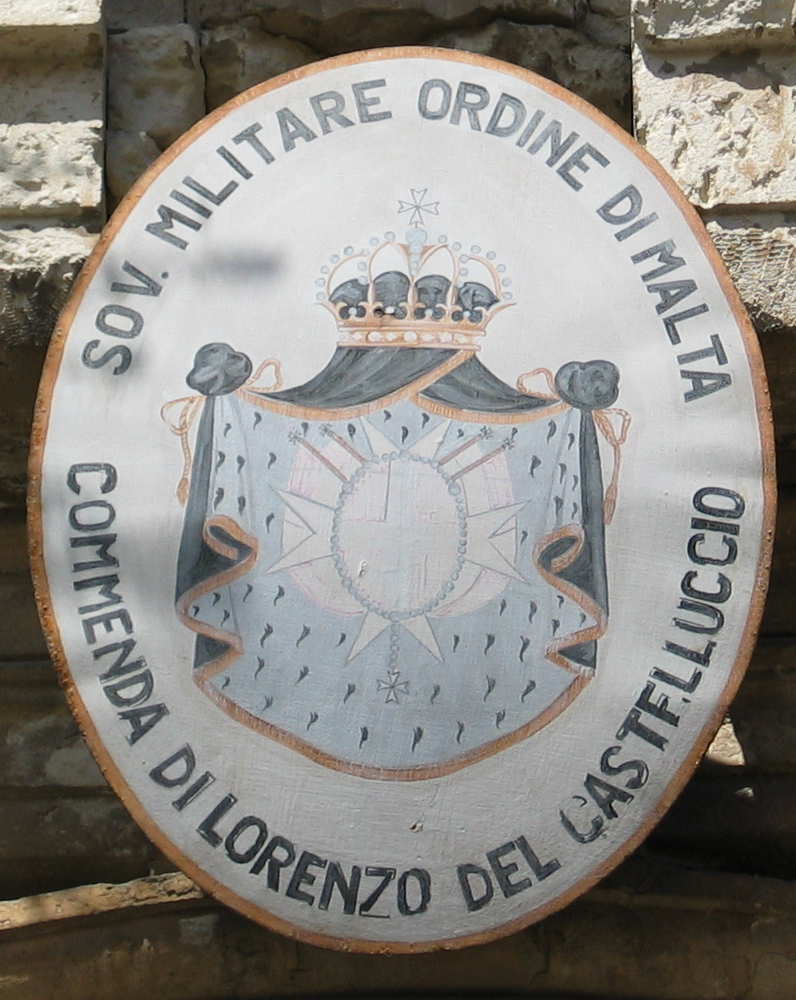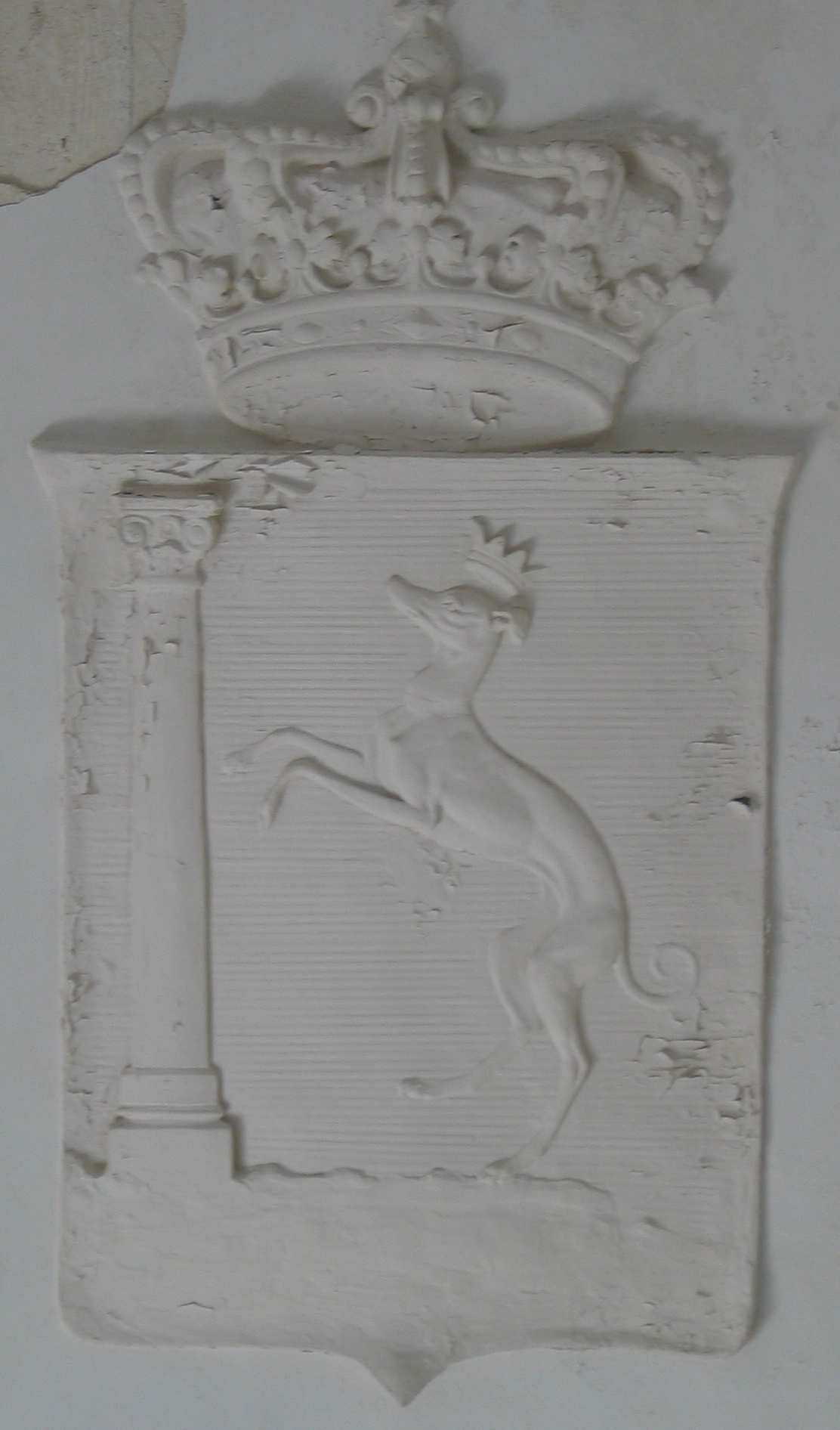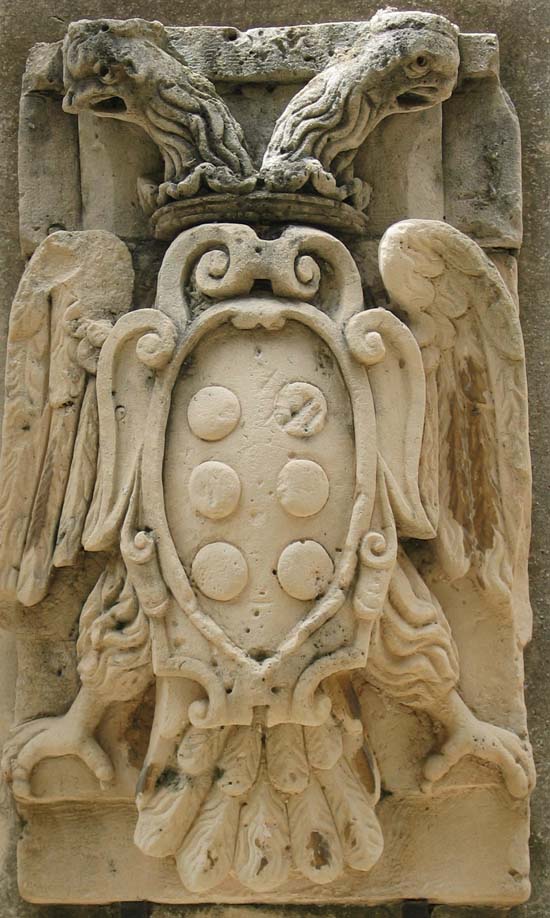

Arms in the courtyard of the Palazzo Bellomo (Galleria Regionale), Siracuse.
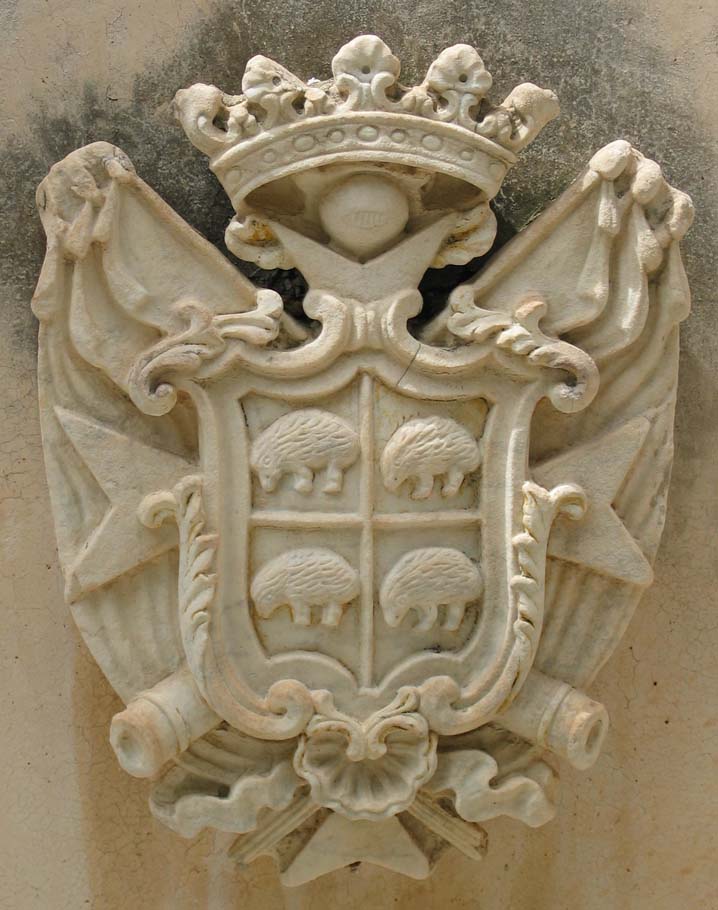
Arms in the courtyard of the Palazzo Bellomo (Galleria Regionale), Siracuse.
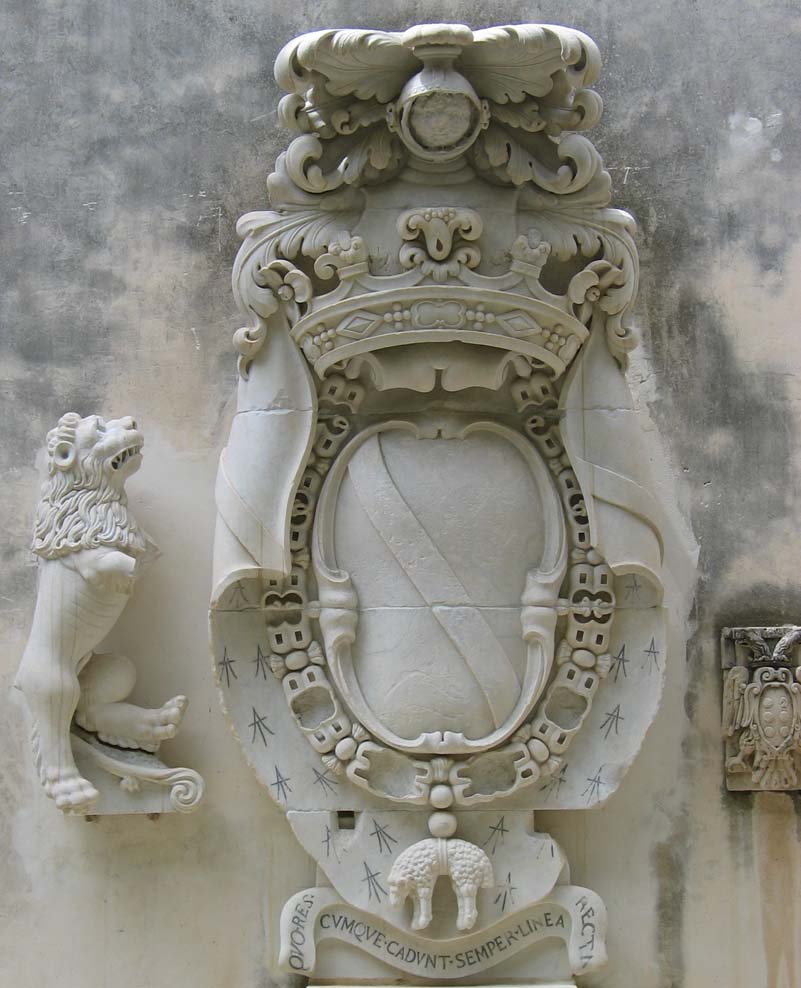
Arms in the courtyard of the Palazzo Bellomo (Galleria Regionale), Siracuse.
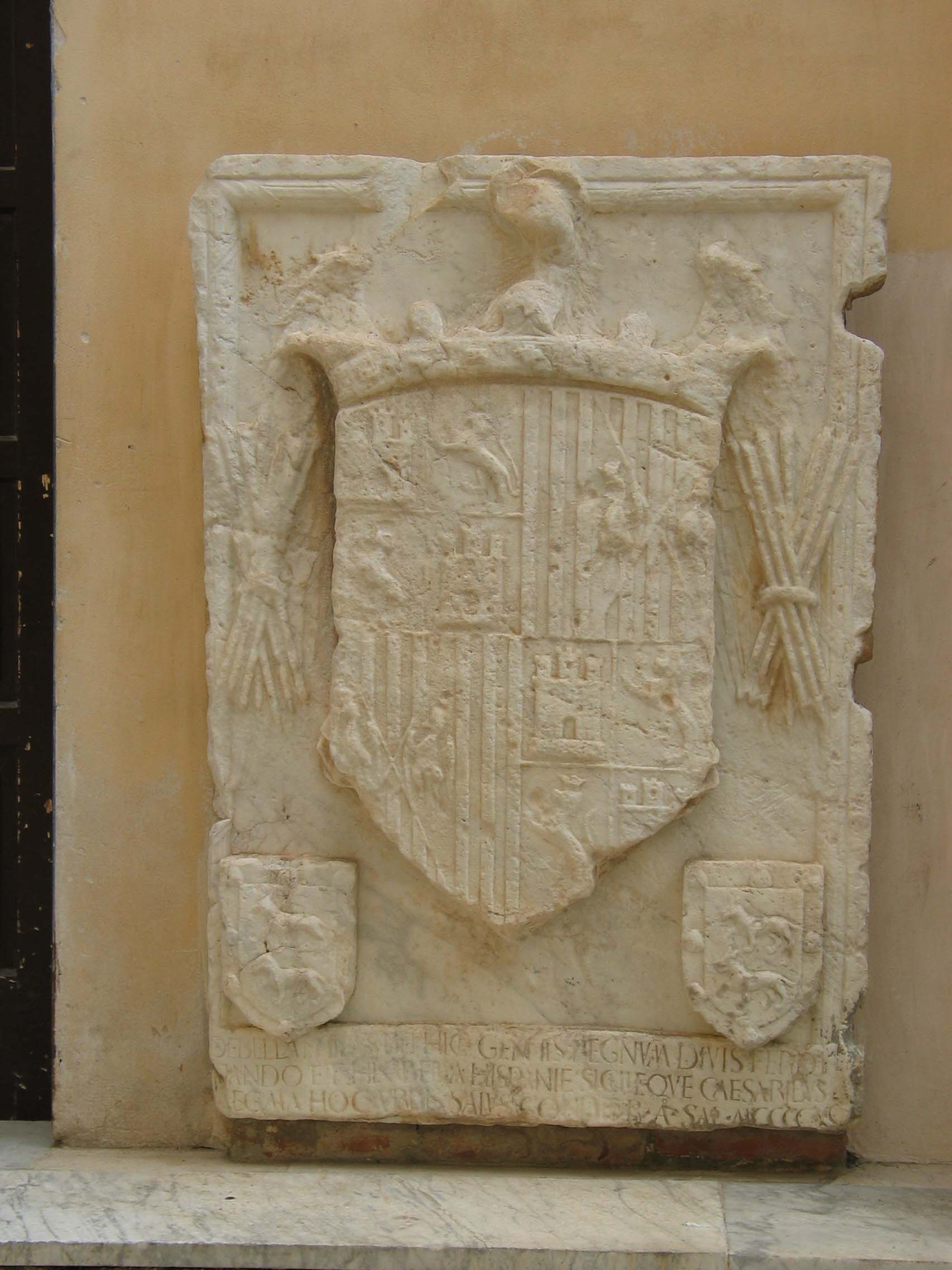
Arms of the Catholic Kings in the courtyard of the Palazzo Bellomo (Galleria Regionale), Siracuse.
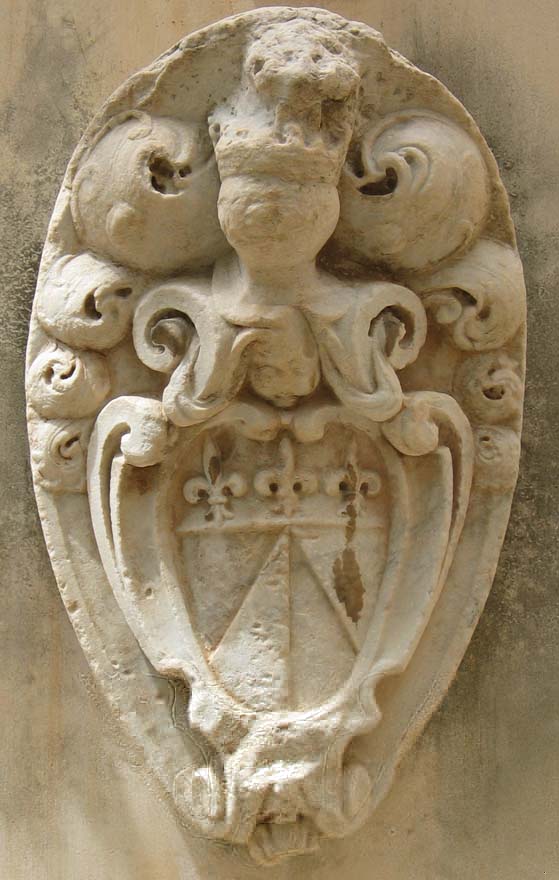
Arms in the courtyard of the Palazzo Bellomo (Galleria Regionale), Siracuse.
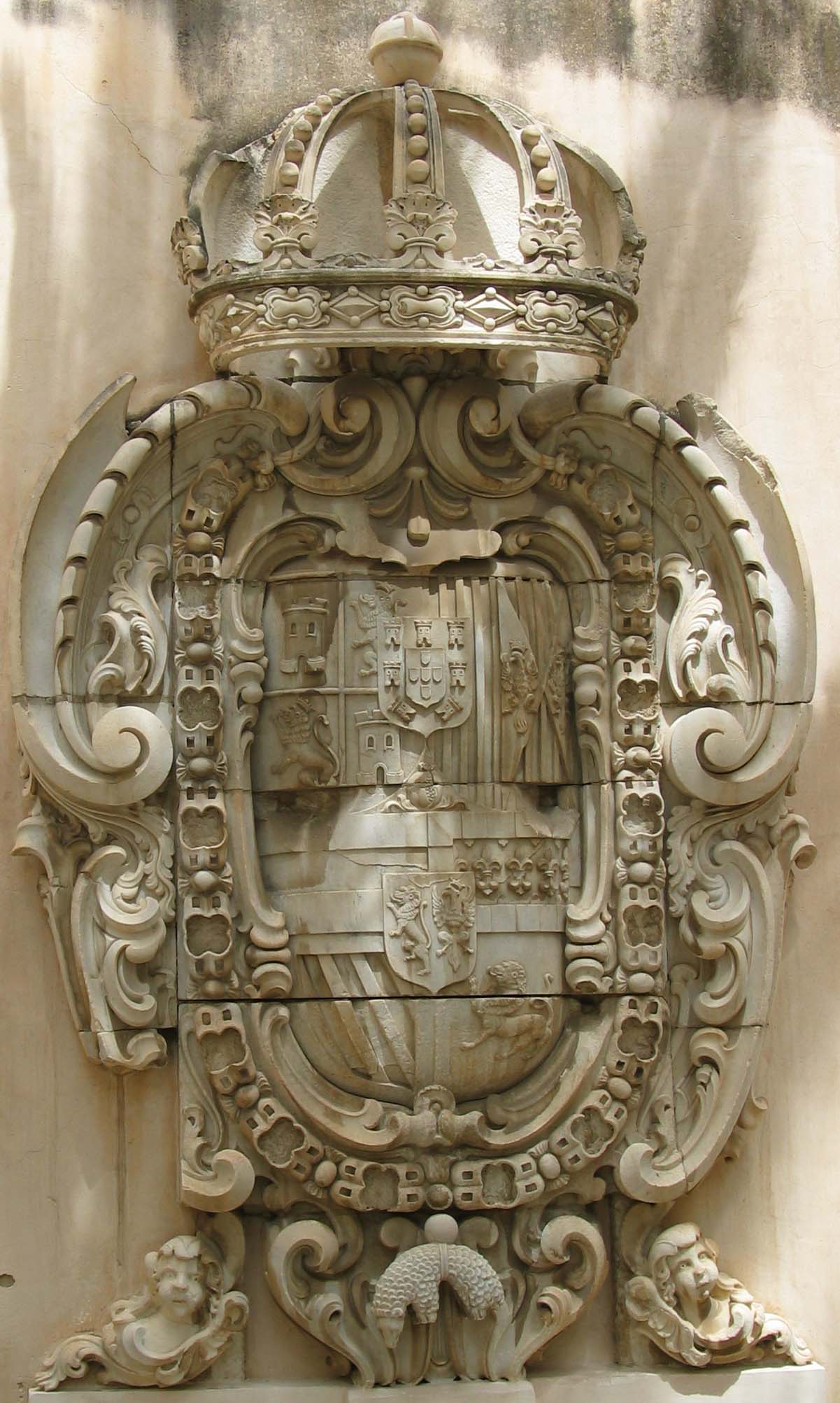
Oversized depiction of the royal arms of Philip II, Philip III or
Philip IV of Spain, in the courtyard of the Palazzo Bellomo, Siracuse.

Rather fanciful arms on a tomb in the duomo of Taormina. The epitaph reads:
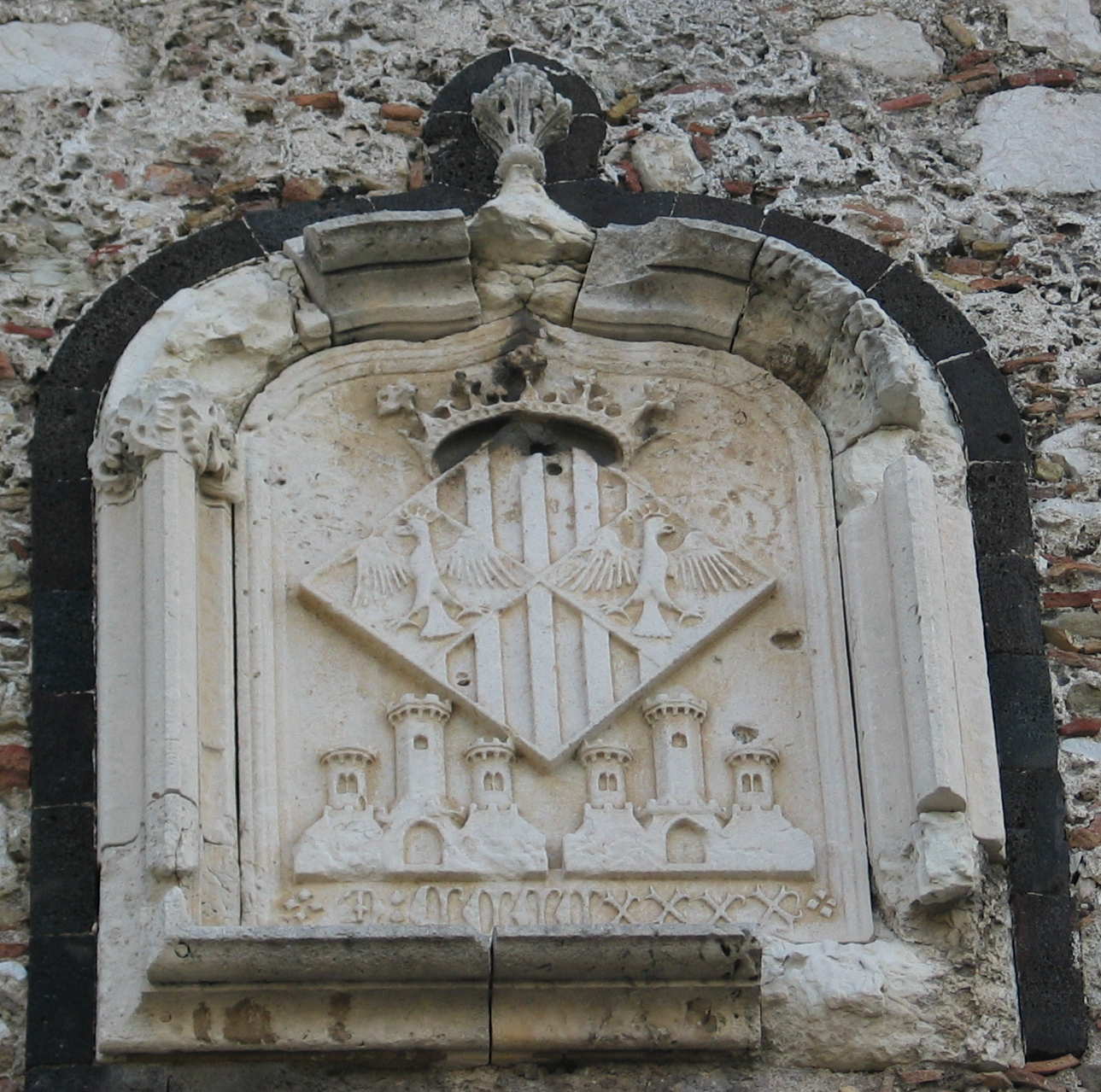
Arms on the Porta Catania, Taormina, dated 1440.
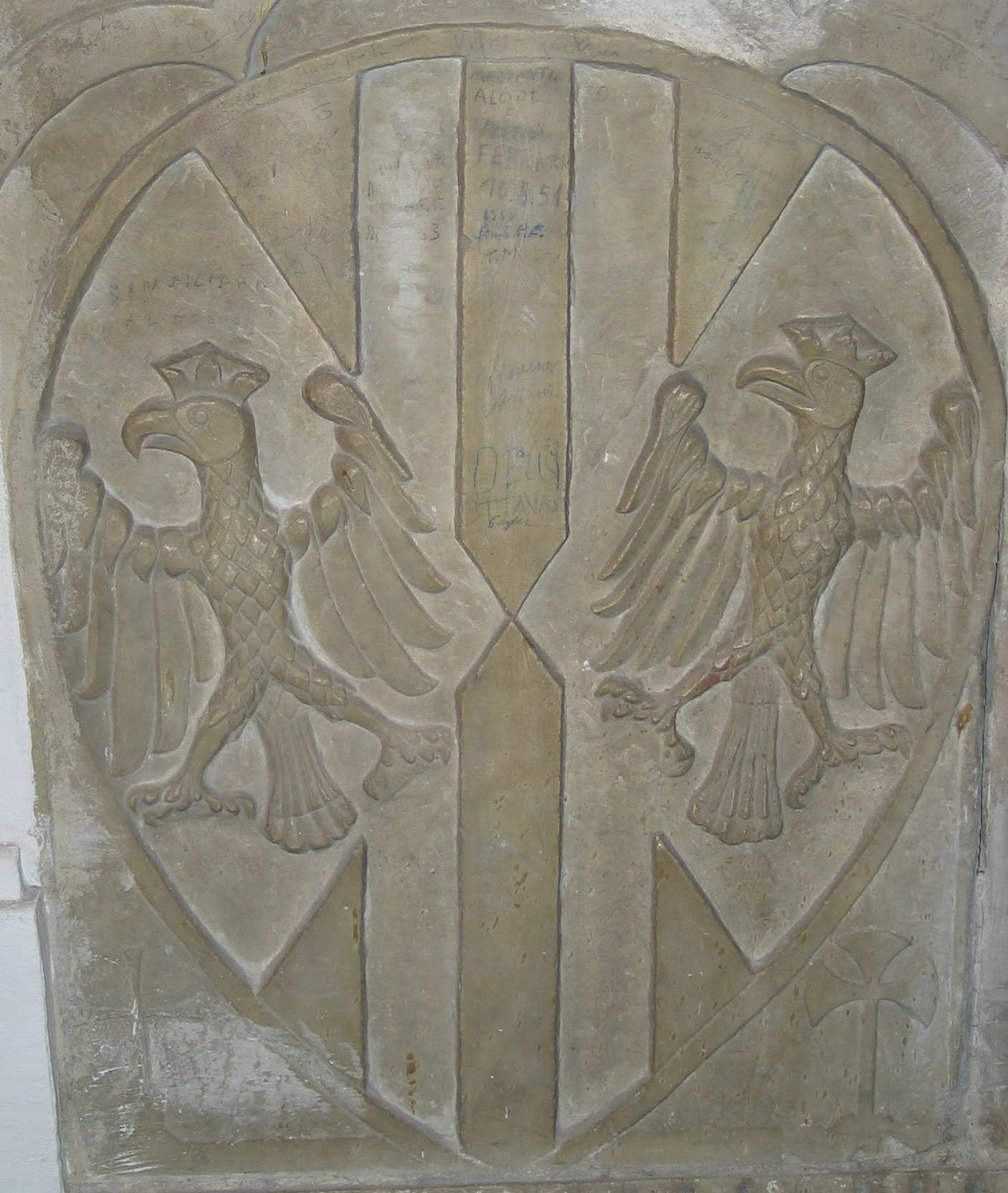
Arms carved on the sarcophagus of William, duke of Athens (d. 1338), son of Frederic II of Aragon, in the cathedral.
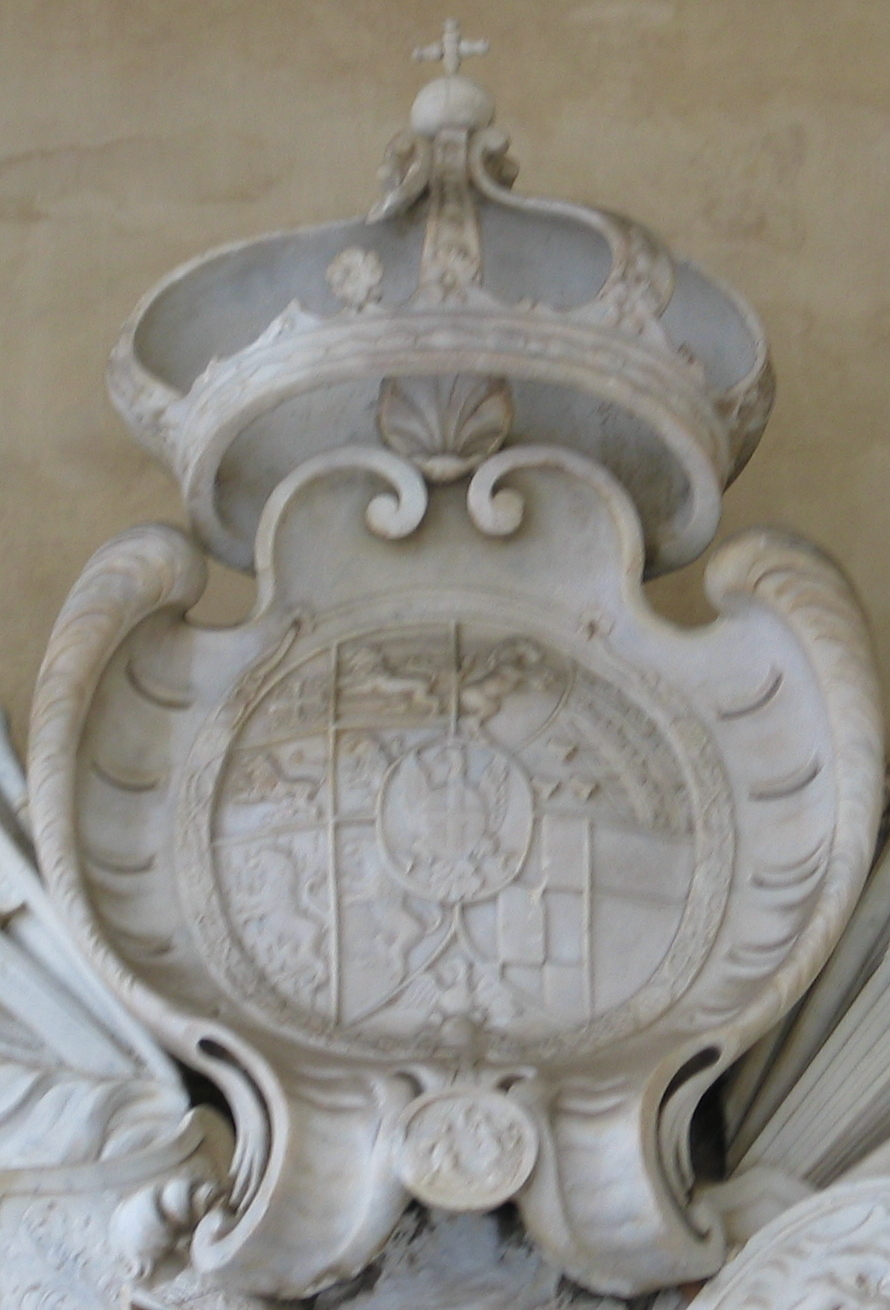
The arms of Vittorio Amadeo, duke of Savoy, crowned king of Sicily
in the cathedral of Palermo on Dec. 24, 1713. The arms appear on
the plaque commemorating the event under the south porch of the
cathedral.

In the same location, the arms of Don Carlos, who ruled as Carlo III
of Naples and V of Sicily from 1735 to 1759 when he became Carlos III
of Spain. He was crowned in that cathedral on July 3, 1735.
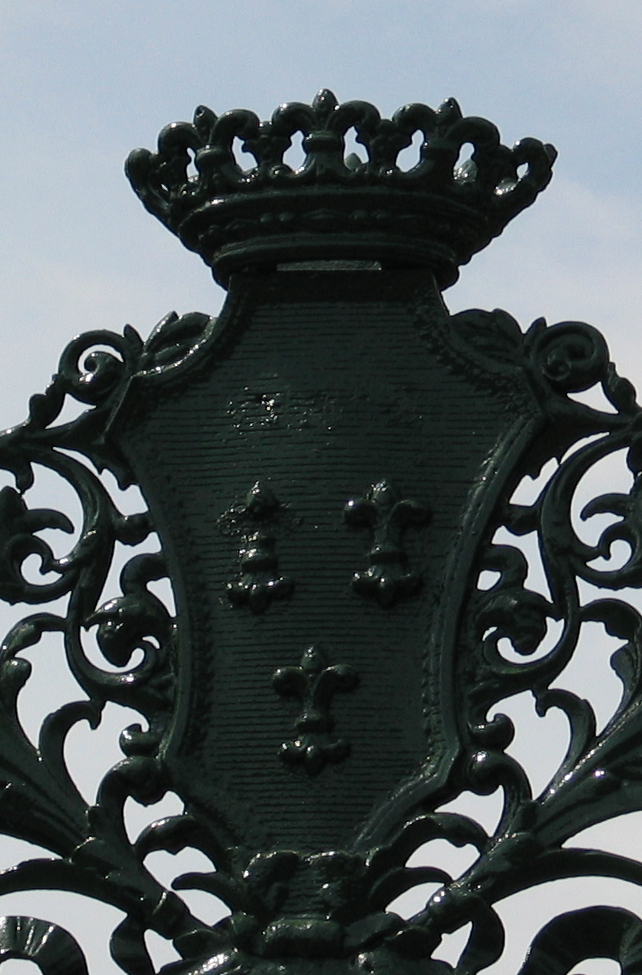
These arms adorn the gate to the Parco Orleans, in Palermo, on the
Corso Ruggero. The entrance to the park is next door to the
Palazzo Orleans. This palace was given by Ferdinand IV as wedding
gift to his daughter Maria Amelia, who married the exiled duke of
Orléans in Palermo in November 1809. She gave the palace
to her son the duc d'Aumale; he in turn bequeathed it to his nephew the
duke of Orléans and French pretender, who died there in
1926. It was seized during World War II and remained property of
the Italian state. It is now the residence of the president of
the Region of Sicily.
The shield still shows the trace of the label which differenced the
royal arms. The label was removed, presumably after 1883 when the
Orléans branch claimed headship of the house of France; the
princely coronet, however, was not replaced with a closed crown.
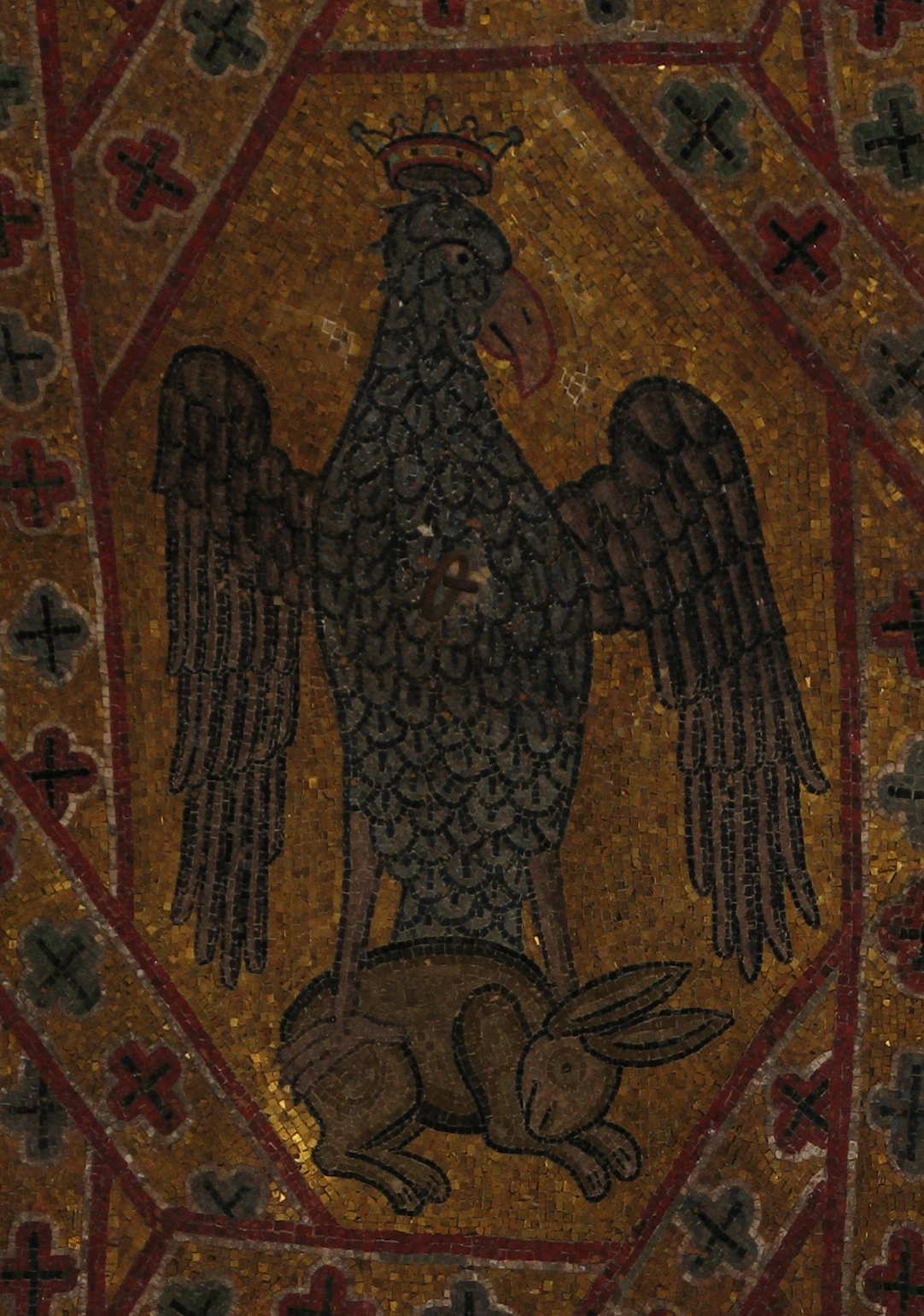
Splendid mosaic on the ceiling of the Sala di Re Ruggero (ca1140), Palazzo dei Normanni, Palermo.
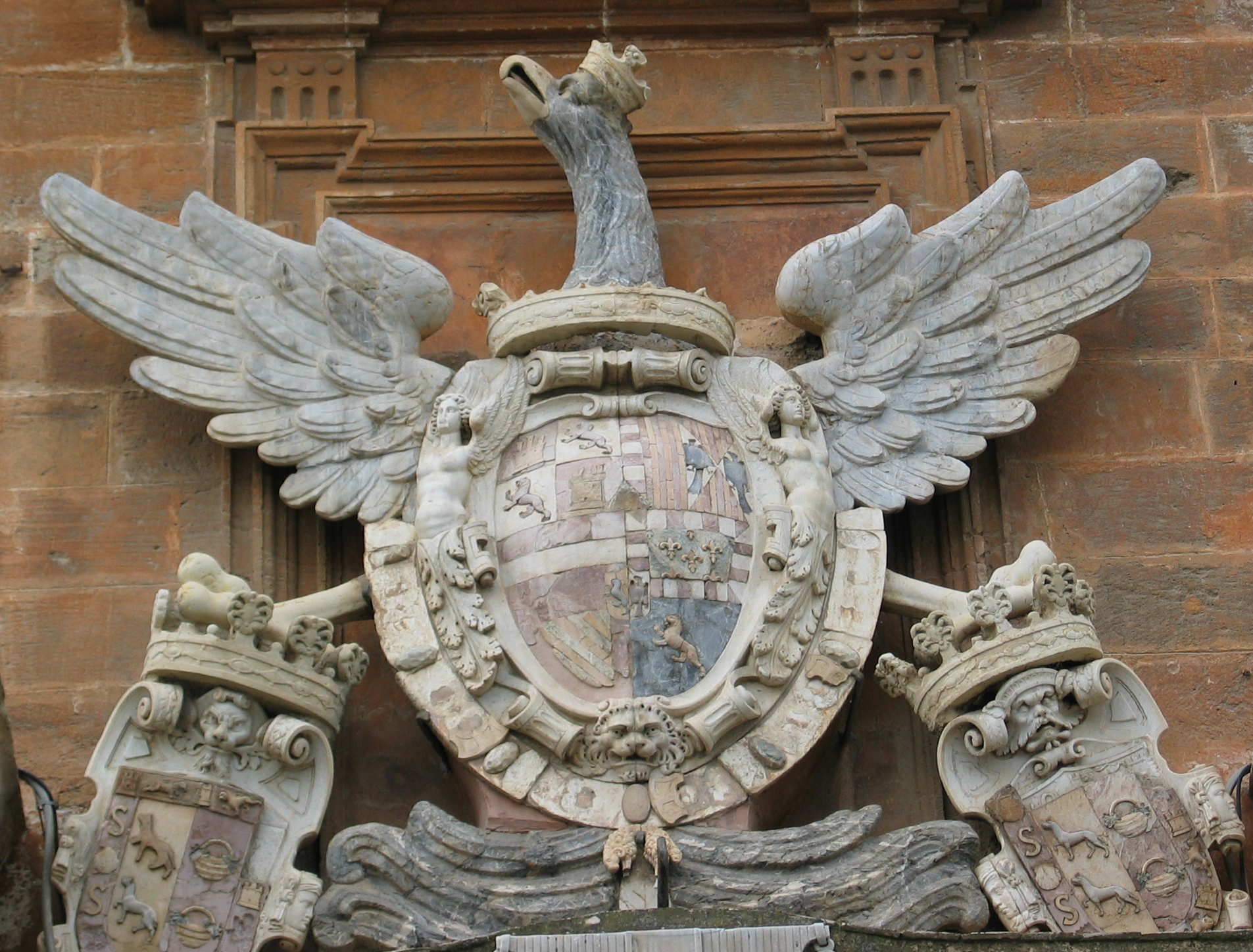
Arms above a doorway on the eastern facade of the Palazzo dei
Normanni. 16th c. The arms on both sides are those of
Cardines impaling ?.

Arms on the facade of the Palazzo Abatellis, Palermo (now the
Galleria Regionale della Sicilia). The palace was completed in
1495 for Francesco Abatellis, paretor of Palermo, in a Catalonian
late-Gothic style. The arms are Or a griffin sable.
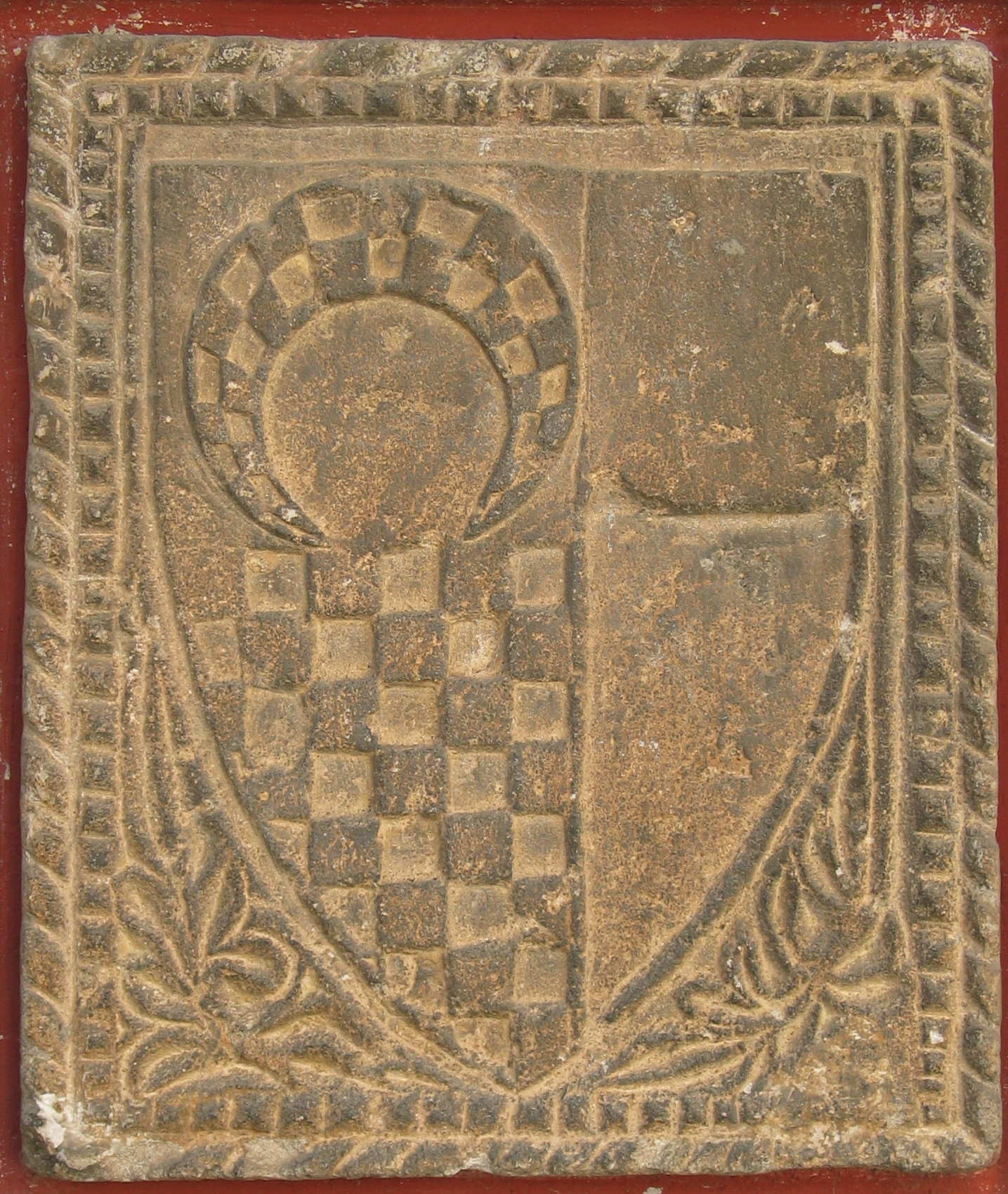
Arms of Luna conte di Caltabellotta, displayed in the courtyard of
the Galleria Regionale della Sicilia, Palermo. The arms are: per fess, argent a crescent versed counter-compony argent and sable, and checquy argent and sable.
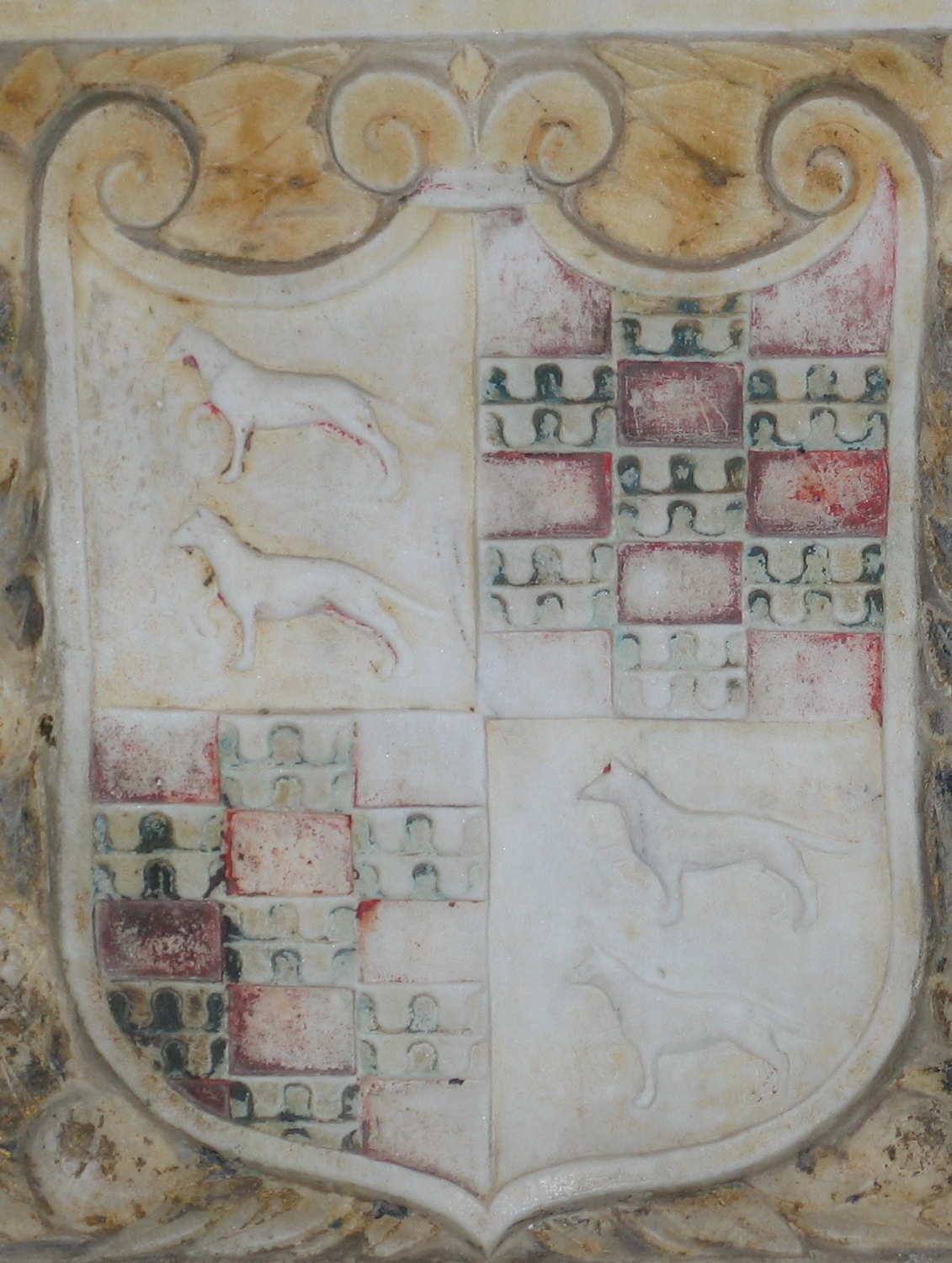
Arms on a sarcophagus in the Galleria Regionale della Sicilia.
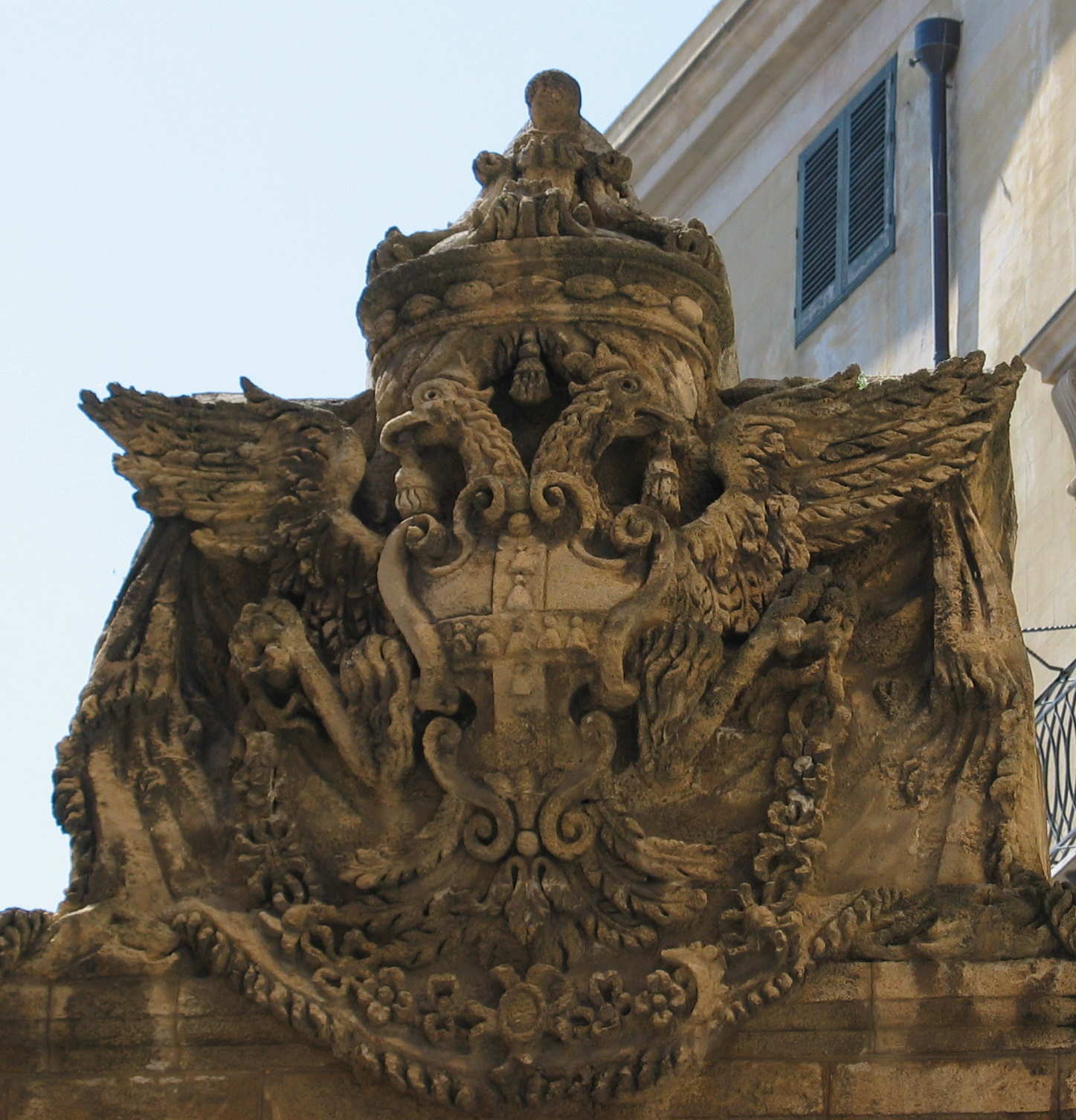
Arms above the doorway of the palazzo Mirto. The arms of Filangieri are Gules on a cross argent nine bells azure.
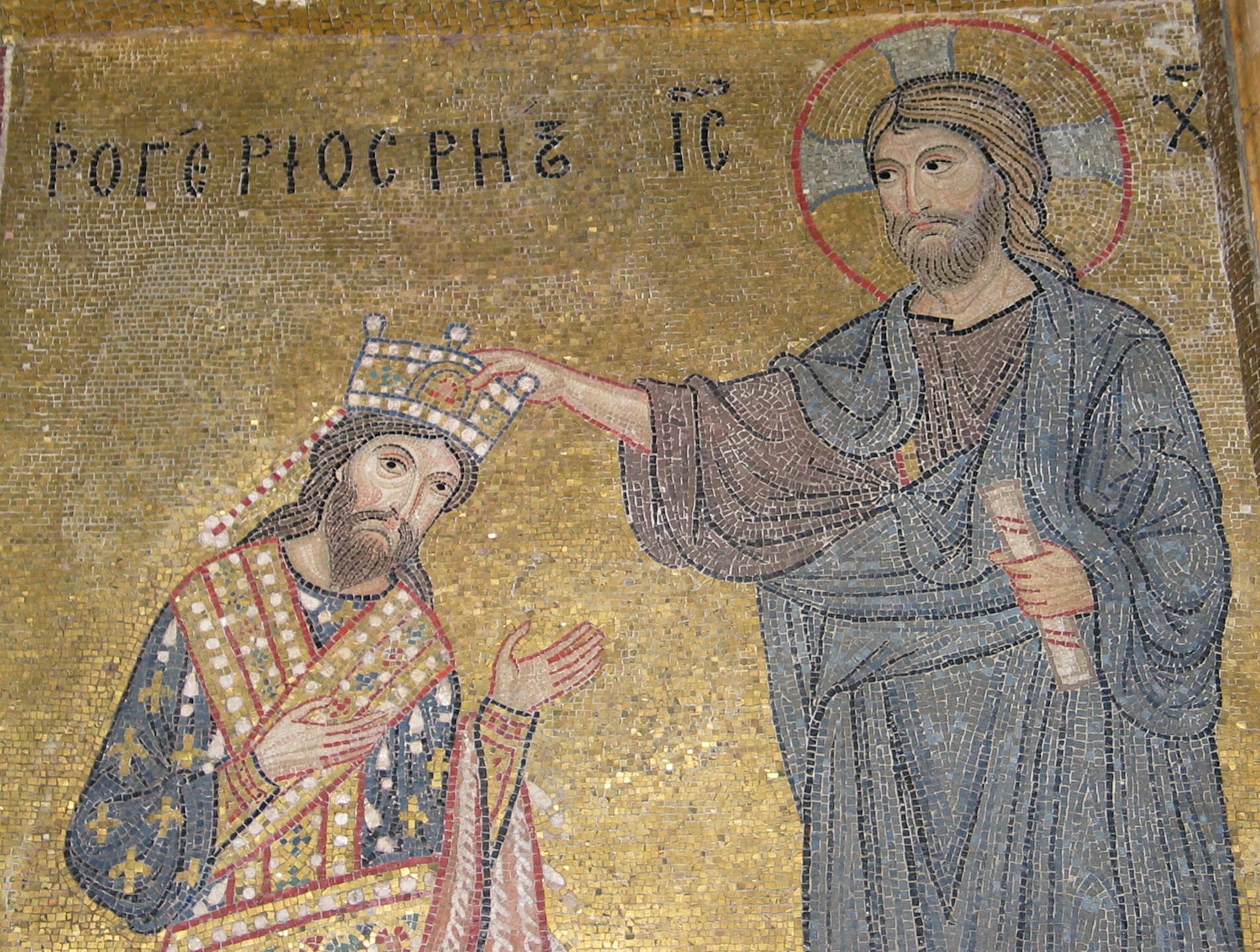
Mosaic in the Martorana church (Santa Maria
dell'Ammiraglio). The church was founded by George of Antioch,
admiral of Roger II. The mosaic shows Roger II (Rogerios Rex) receiving the royal crown from Christ.
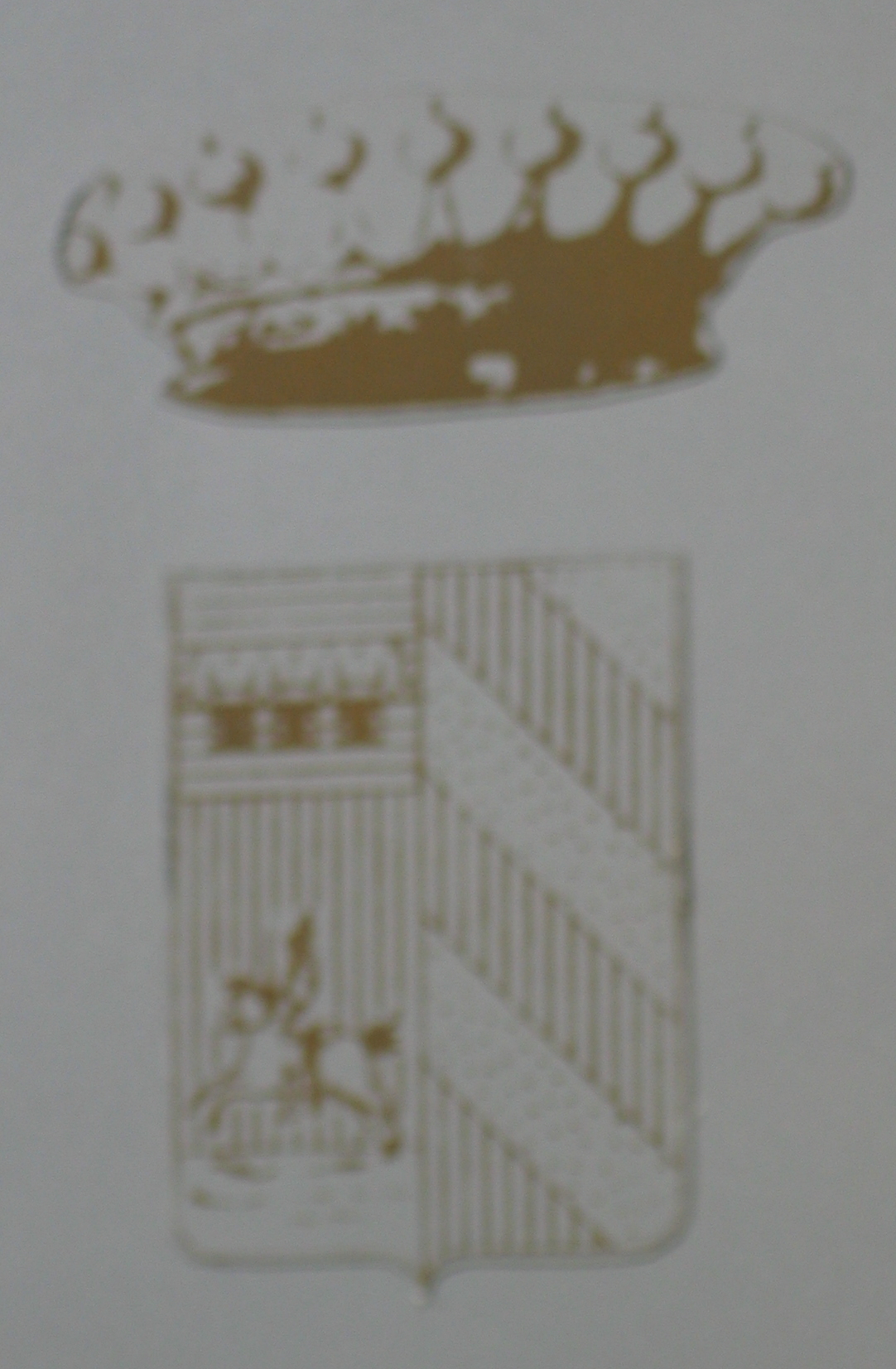
Arms on the door of a Rolls Royce parked on the Piazza Pretoria. The driver could not identify them.
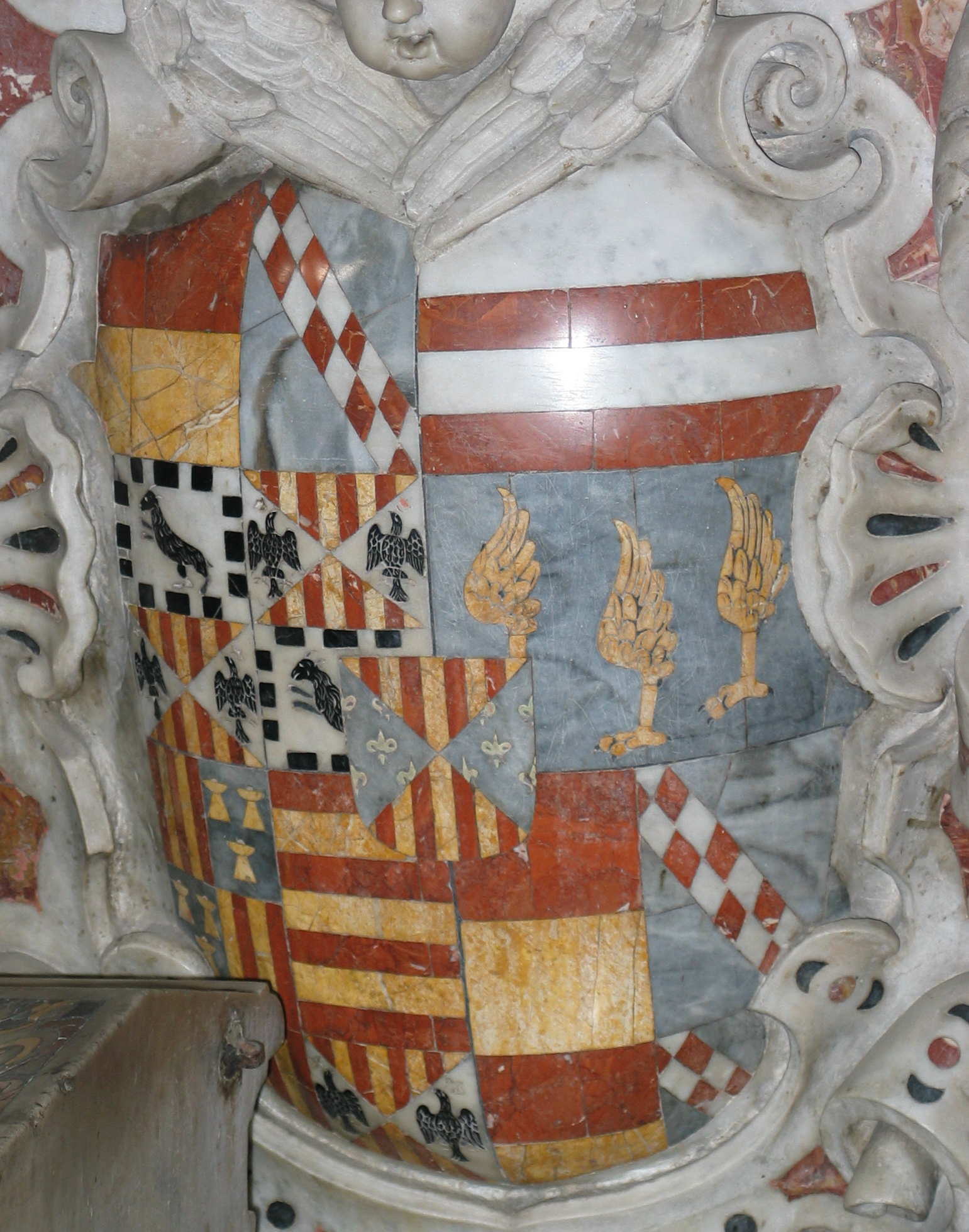
Arms decorating a chapel inside San Giuseppe ai Teatini, Palermo.

The tomb of Sir John Francis Edward Acton (1736-1811), who served as
minister of the marine, minister of finance and prime minister of the
kingdom of the Two Sicilies under Ferdinand IV. It is located in
Santa Ninfa dei Crociferi, on the via Roma close the Quattro Canti.
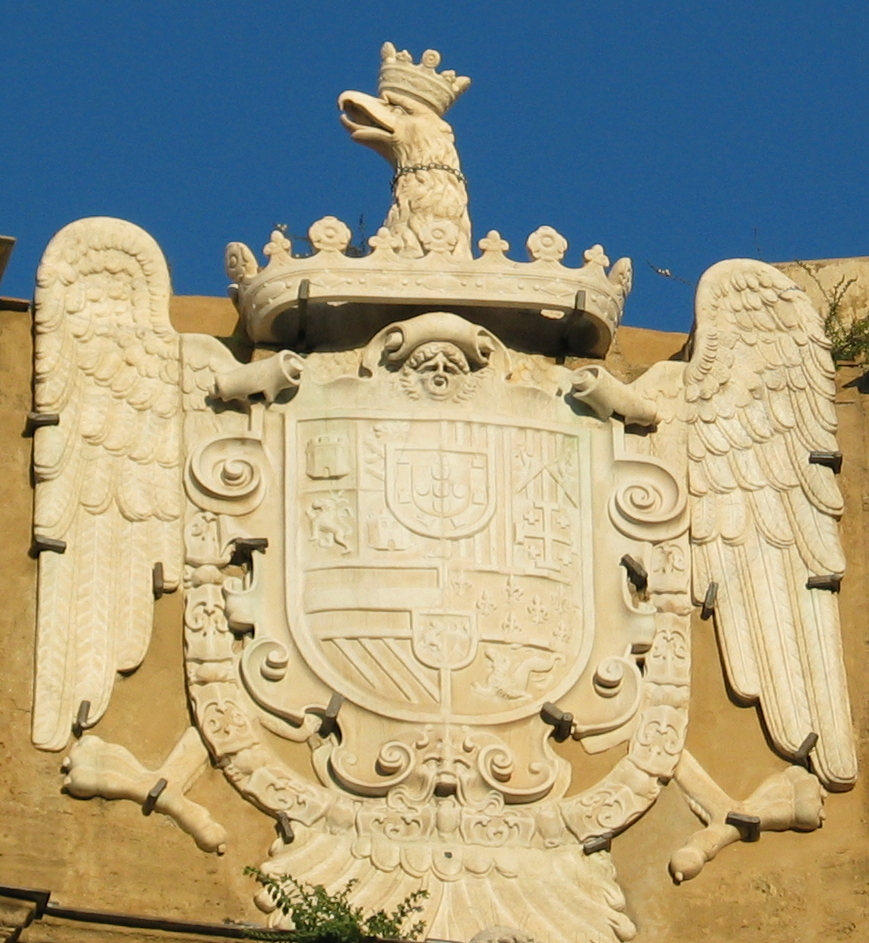
Arms of Philip II of Spain, king of Sicily, on the Quattro Canti.
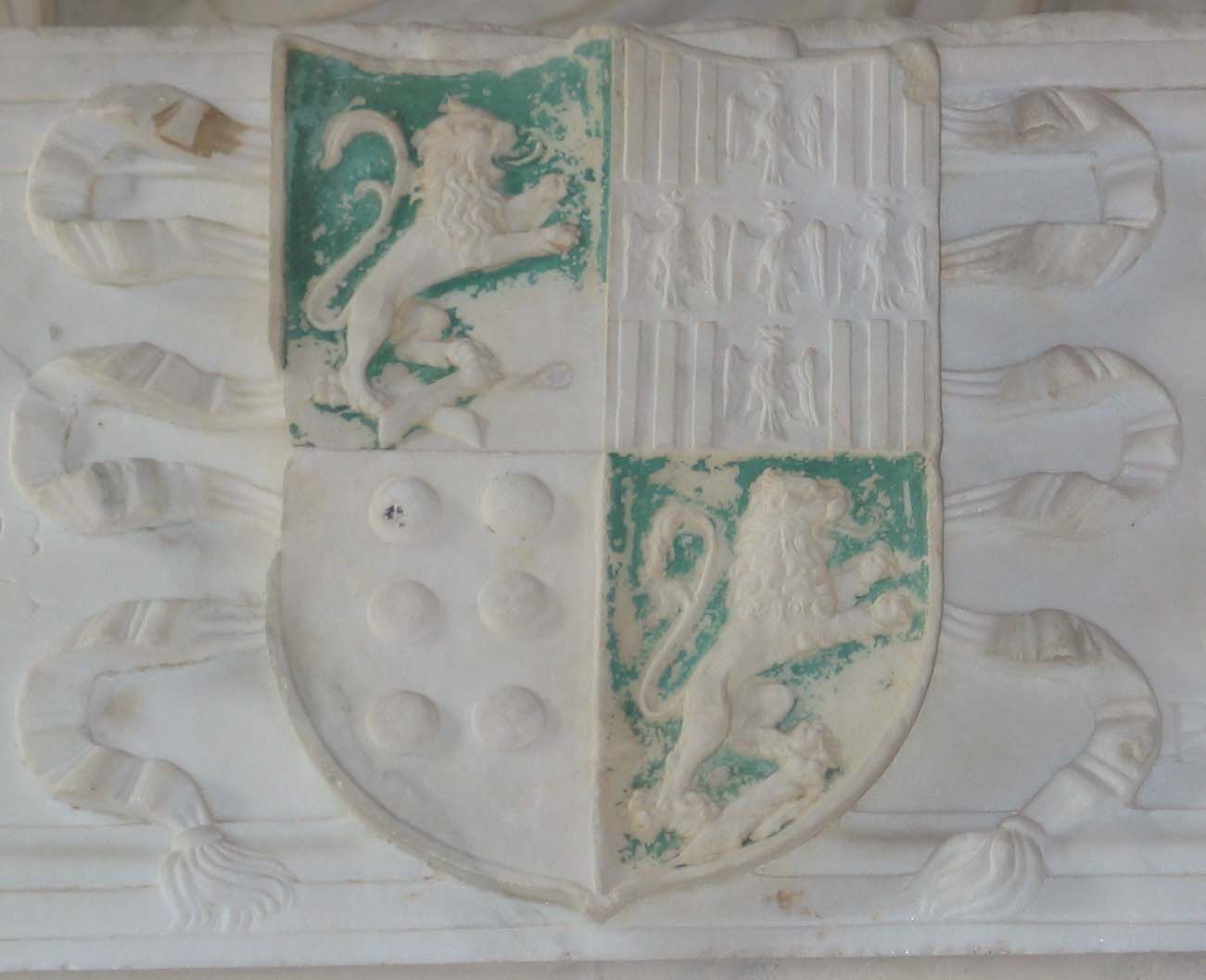
Arms of Eleonora Branciforte (d. 1520, aged 22) on her monument by Giovanni Battista Mazzola, in the Palazzo Bellomo, Siracuse.
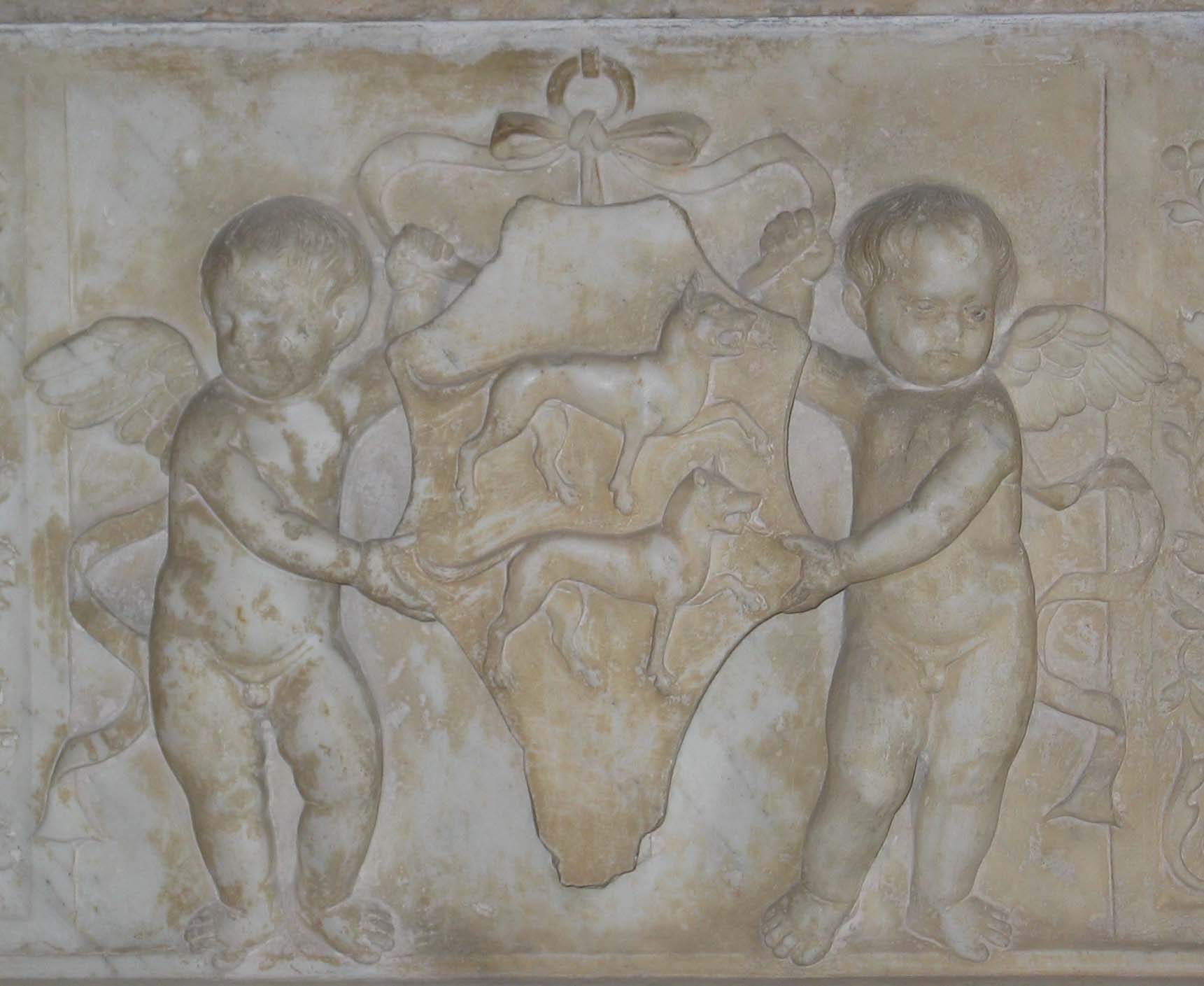
Arms on the sarcophagus of Giovanni Cardinas, by Antonello Gagini (Palazzo Bellomo, Siracuse). The epitaph reads:
Cardinas hic rector norma Iohanes
tam iusti cultor q~ pietatis honos
rex aulam isabellae reginae
annis XXV ac e vita migravit
penult martii M CCCC LXXXXV
